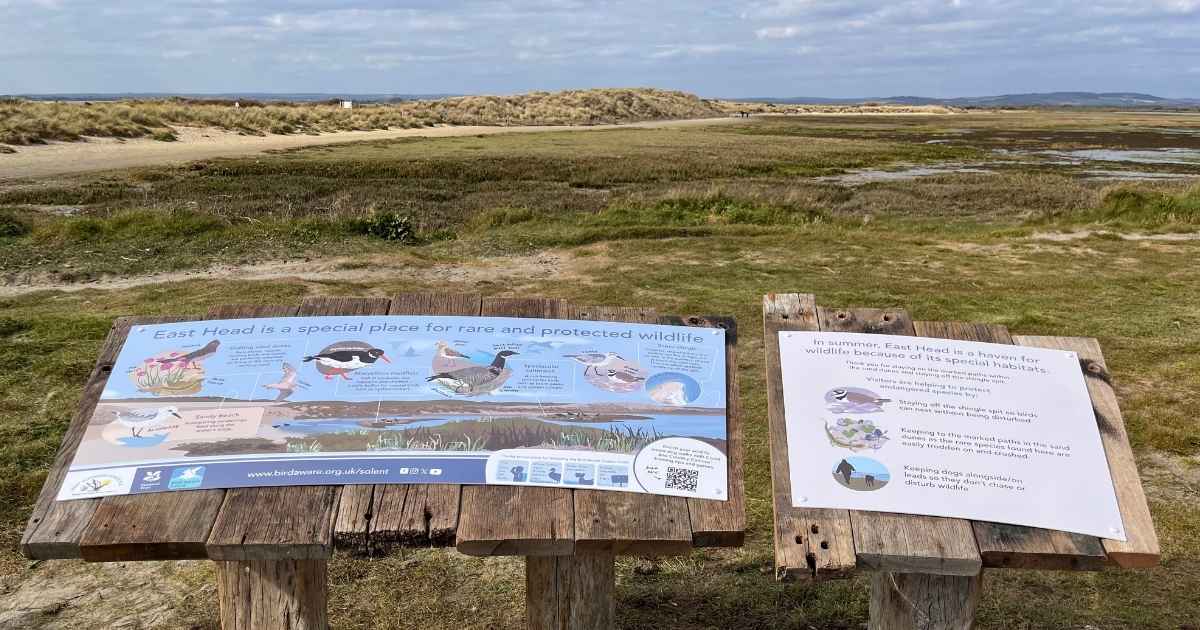A guest blog by Bird Aware Solent‘s ranger Richie Ainger
Ranger Richie is often out in Chichester Harbour, chatting with visitors about our migratory birds and how we can help them thrive. Here he shares why East Head is one of his favourite spots on the harbour and gives tips on enjoying its stunning landscapes while keeping the wildlife safe.
An everchanging landscape
East Head is a sand and shingle spit, projecting northwards into Chichester Harbour from the mouth of the harbour where it meets the eastern Solent. It’s at the far western end of West Wittering beach and has been managed by The National Trust since 1966.
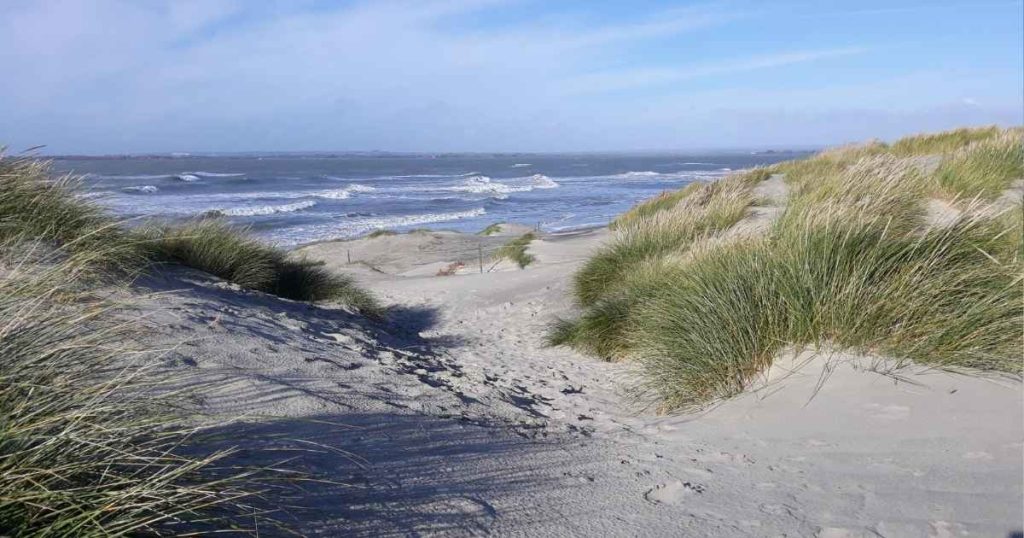
It is a dynamic landscape, everchanging, and is an example of nationally rare sand dune habitat. Alongside the dunes, East Head also has sandy beaches, saltmarsh and mudflat habitats.
These habitats are what makes East Head such an important site for wildlife, providing both food and protection for the masses in the winter months. Whilst the saltmarshes and mudflats provide the seaweed, lugworms and tasty crabs, the sandy beaches are perfect instead for catching invertebrates along the water’s edge.
So, what kind of species can you spot here in the winter?
Brilliant brents
Dark-bellied brent geese travel all the way from Arctic Siberia to feed on seaweed, seagrass, and grass.
An absolutely iconic bird of the Solent, this species certainly sparks curiosity when witnessing them arriving in their thousands during the winter. Their journey, which spans around 3000 miles, is a marvel that you can read more about in Bird Aware Solent’s feature about brent geese.
Chichester and Langstone Harbours are internationally significant areas for overwintering populations of dark-bellied brent geese, hosting 6.5% of the world’s population each winter. Groups of anywhere between 500 to 2000 of these magnificent birds can be seen at East Head, feeding around the mudflats and saltmarsh of Snow Hill Creek (to the East of the spit) at low tide.
At high tides, you may see them rafting on the water to save energy or feeding on the grass in the car parks of West Wittering Estate.
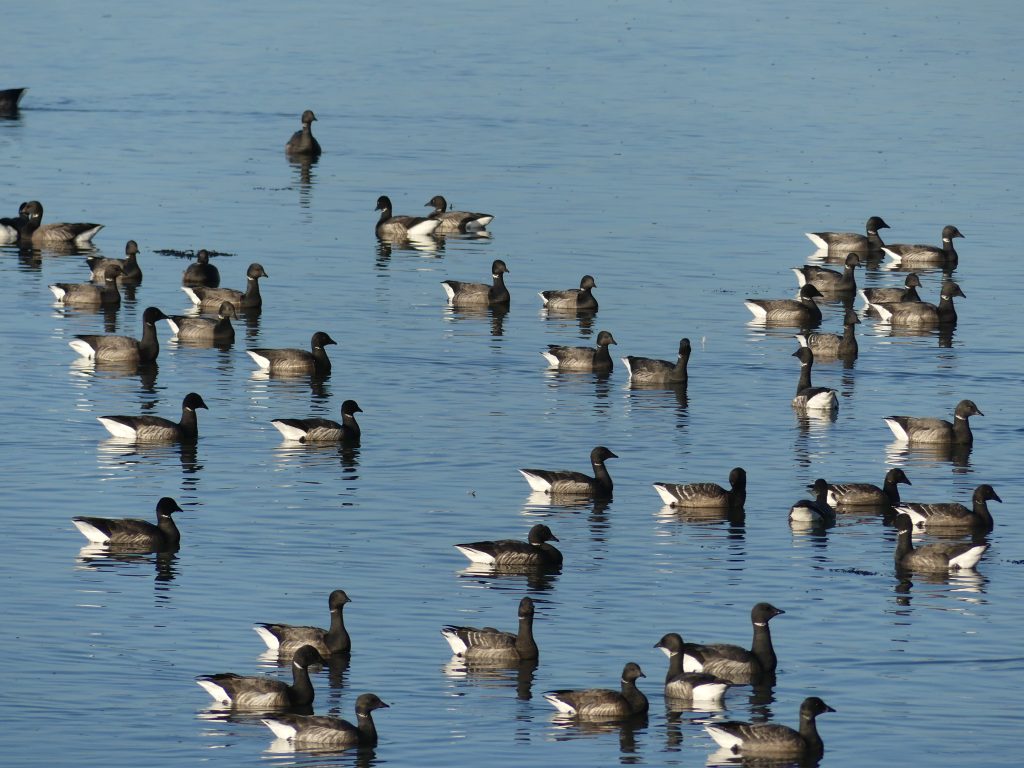
Secretive sanderlings
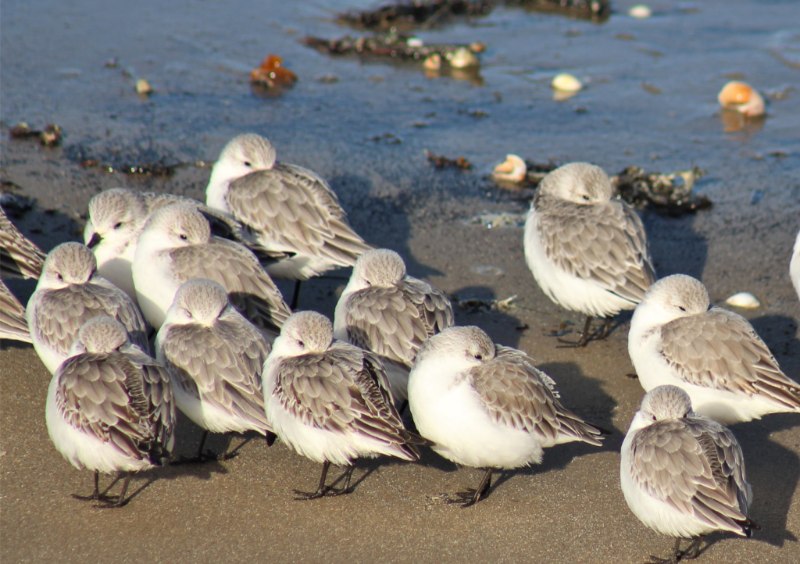
On the Western side of East Head, you’ll find a large open sandy beach. This is an enticing area for dogs to run off lead on the water’s edge. However, this is also where you will often find large groups of sanderlings. These pretty, small wading birds can be found feeding on intertidal, scurrying after lapping waves and feeding on small insects. They remind me of a clockwork toy in the way they move; energetic and very active!
Despite being such an active bird whilst feeding, it’s crucial that they can rest and feed undisturbed. For a bird that only weighs 50g, they travel to the Solent from as far away as Greenland and Siberia during the winter months.
By walking at the top of the beach, we can help ensure that they store enough energy to make their monumental journeys back for the summer months.
East Head’s other residents
As you walk past the saltmarsh at a lower tide, if you look and listen closely, you’ll discover a number of birds using this area for feeding. You may hear the distinctive calls of the redshanks, oystercatchers, curlews or lapwings. You may also notice a grey plover or, if you are very lucky, some of the avocets that live in the Snow Hill reserve. There may also be a grey heron or little egret stalking in the little creeks that form this habitat.
As you near the top of East Head, the true wonder of it opens out in front of us. We leave the saltmarsh and mudflats behind and are greeted by one of my favourite views of Chichester Harbour. Here, the shingle sand is home to species such as ringed plovers and dunlins. Above us we may hear the sharp call of a sandwich tern or the lovely trill of a skylark. Out on the water, great crested grebes, cormorants and maybe a great northern diver may be seen as you look towards Chichester. You might even spy a seal!
At high tide, you can also find a raised shingle bank that is perfect for a hide tide roost – an area of land that’s not covered by the tide and used by birds to rest and conserve energy. These areas are crucial for the survival of our wintering visitors and requests on signs should be respected.
Sharing the shore

We’re so lucky to live in such a special place of natural beauty that attracts these protected and vulnerable species, so it’s important that we do all we can to help them. Balancing human recreational use of the beach with nature is challenging. Migratory birds are nervous of people and particularly of dogs – they view them as a predator due to the similarity in looks and behaviour to foxes and wolves found in the Arctic.
If birds are disturbed too often and are forced to fly away when they should be feeding or resting, they may not take on enough energy to survive the cold weather and, ultimately, the migration back to their breeding grounds in the spring. Thankfully there are some simple things we can all do to make sure these special birds have the space they need to thrive.
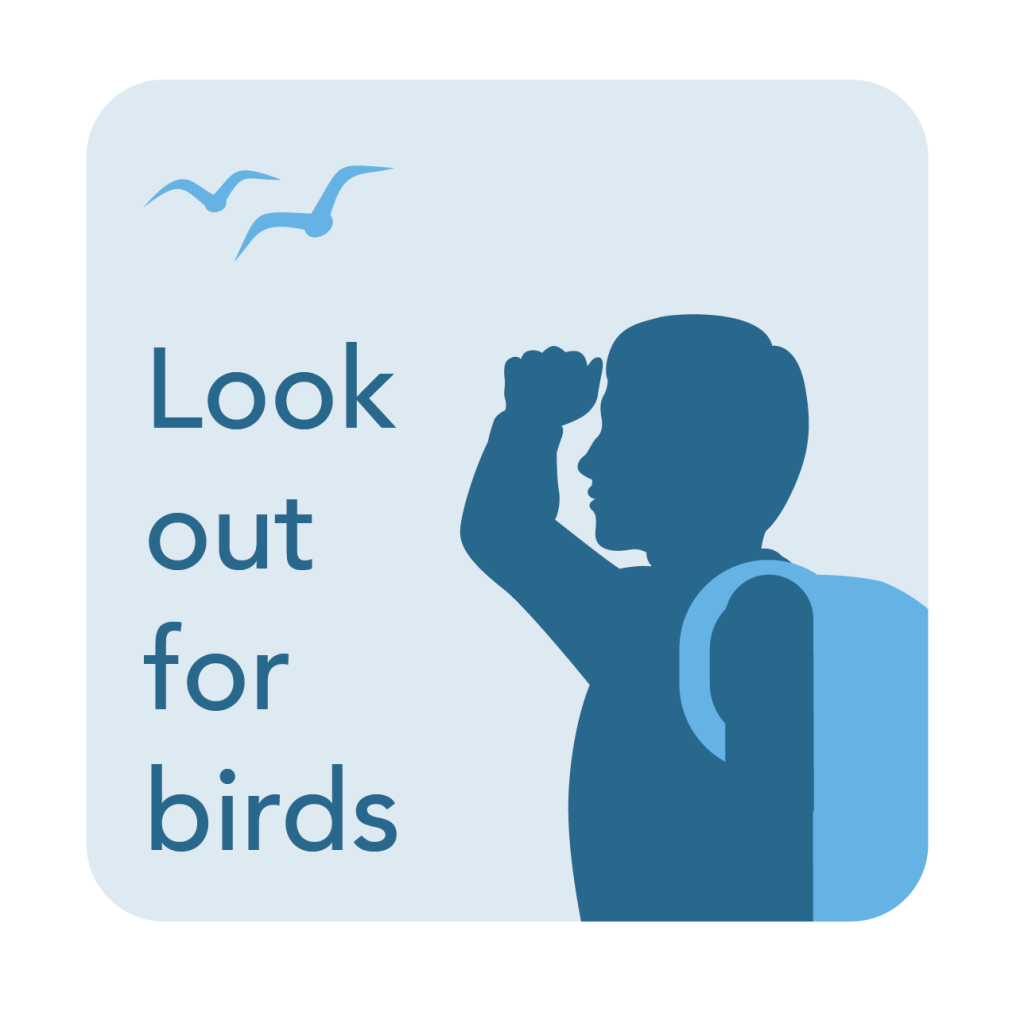
Firstly, look out for birds. Please look carefully for any birds that may be sharing the coast you’re visiting. If you see birds using a certain area of the coast, you can avoid that area so they can rest and feed undisturbed.
Some birds, like the sanderling, are very well camouflaged on shingle beaches. They can be hard to spot unless you look carefully.
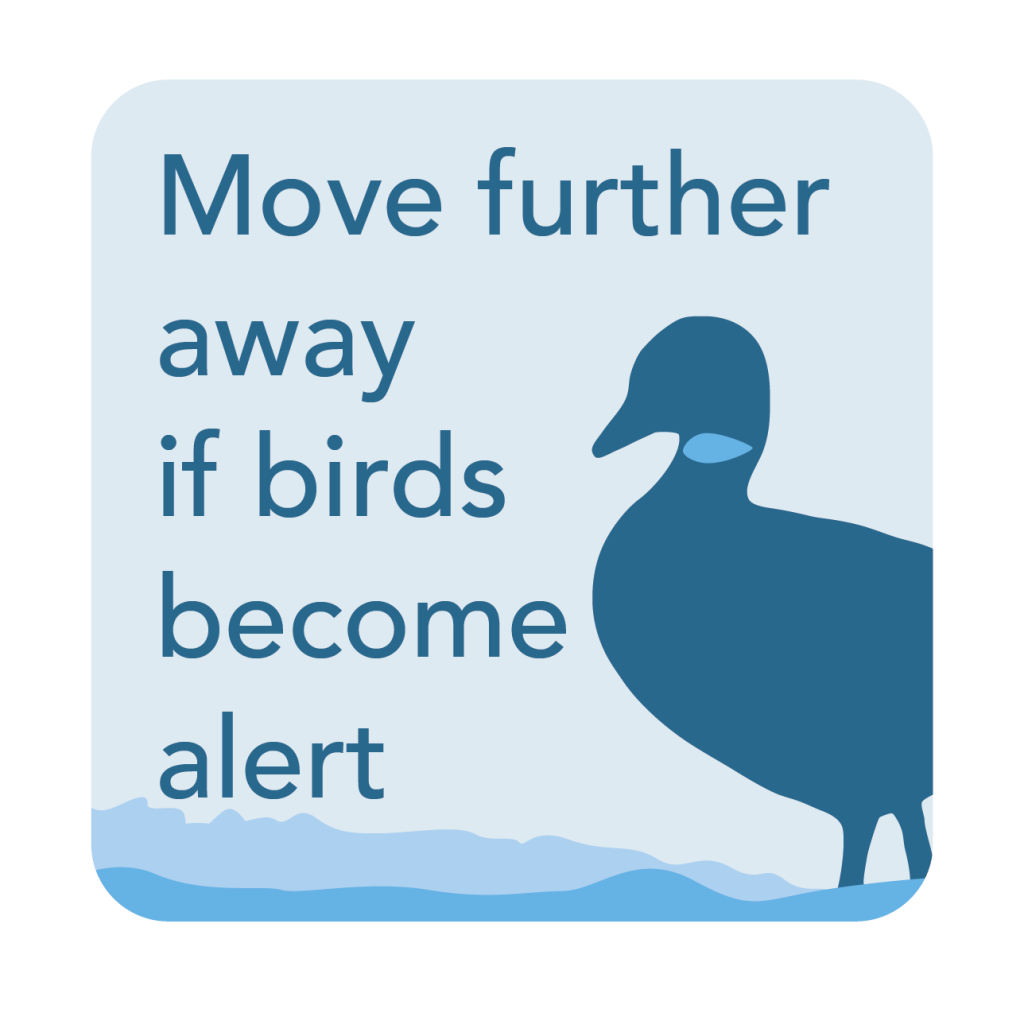
If you’ve noticed some birds have become alert to our presence, move further away. Signs of birds becoming alert include lifting or turning their heads towards you, calling out, stretching or flapping their wings, walking or swimming away.
By staying as close to the top of a beach, or on a path, we can all minimise our impact to birds feeding or resting.

Keep dogs alongside us. East Head is a special habitat, full of amazing nature. Even the best behaved dogs may still cause disturbance to overwintering birds. Keeping dogs alongside will minimise that disturbance and mean they are not using valuable energy flying away from the threat. If you want to let your dog off the lead for a run, there is a more suitable beach in front the café as you enter the West Wittering estate.
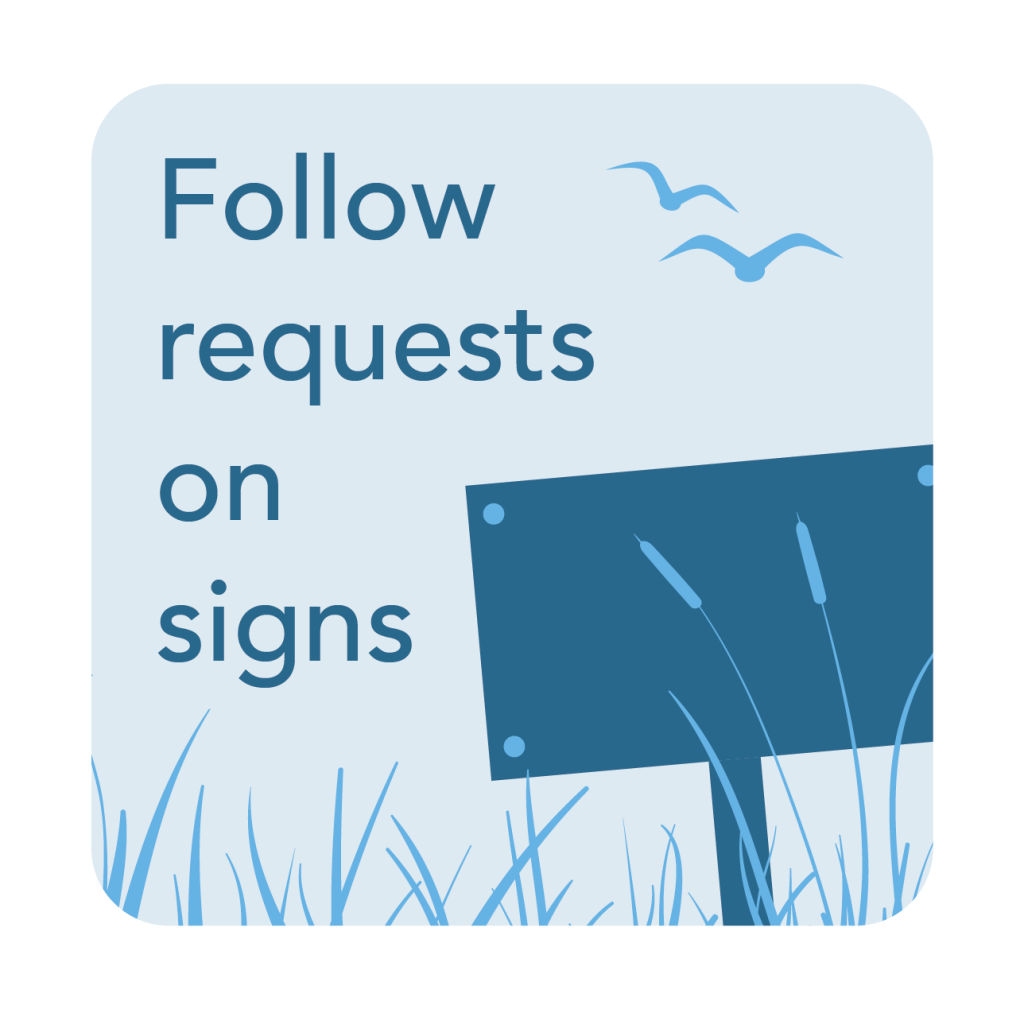
Finally, follow requests on signs.
East Head is also a sensitive place, and there are sections of the beach and dunes that are roped off. Please follow the requests on the signs as you walk round the site. These signs will be helping to divert pressure away from sensitive areas. They may also ask us to observe a specific behaviour when using a certain section of the coast. It is important we follow these requests.
By taking steps to protect these remarkable birds, we can help ensure their future and look forward to their return to the Solent each winter.
Find out more about Bird Aware Solent and their work to protect the Solent’s bird populations here.
